The living room remains the heart of our homes, a space where design meets comfort and functionality. As we move into 2025, exciting new trends are emerging that blend technology, sustainability, and personalized style. Your living room deserves a refresh that captures your personality while embracing the cutting-edge design elements of the coming year.
I’ve spent countless hours researching the most influential interior design movements for 2025. Trust me when I say these aren’t your typical, predictable design ideas you’ve seen recycled year after year. These are fresh, innovative approaches that will truly transform your space.
Let’s dive into these 17 game-changing living room ideas that’ll have your friends asking who your designer is.
1. Grey Living Room with Brown Sofa Sophistication
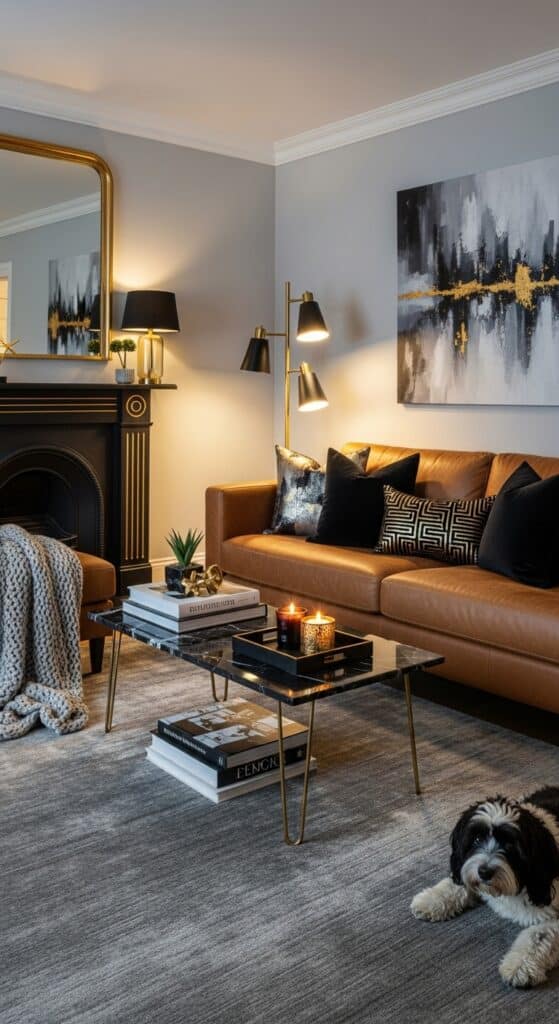
Grey continues its reign as the ultimate neutral canvas, but 2025 brings a sophisticated twist. Picture this: a sumptuous brown leather sofa anchoring a space painted in smoky grey tones. The contrast is immediate and striking.
Black and gold accents are absolute must-haves here. Think gold-framed mirrors, matte black lighting fixtures, and metallic side tables that catch the light just so. I’ve seen this combination work magic in even the most awkward spaces.
The trick is balancing warmth and elegance. Layer in tactile elements like chunky knit throws, velvet cushions in deep jewel tones, and plush area rugs that beg for bare feet. The atmosphere becomes undeniably cosy without sacrificing an ounce of sophistication. Its the perfect blend of comfort and luxury that design experts are obsessing over.
2. Bohemian Charm with a Green Sofa
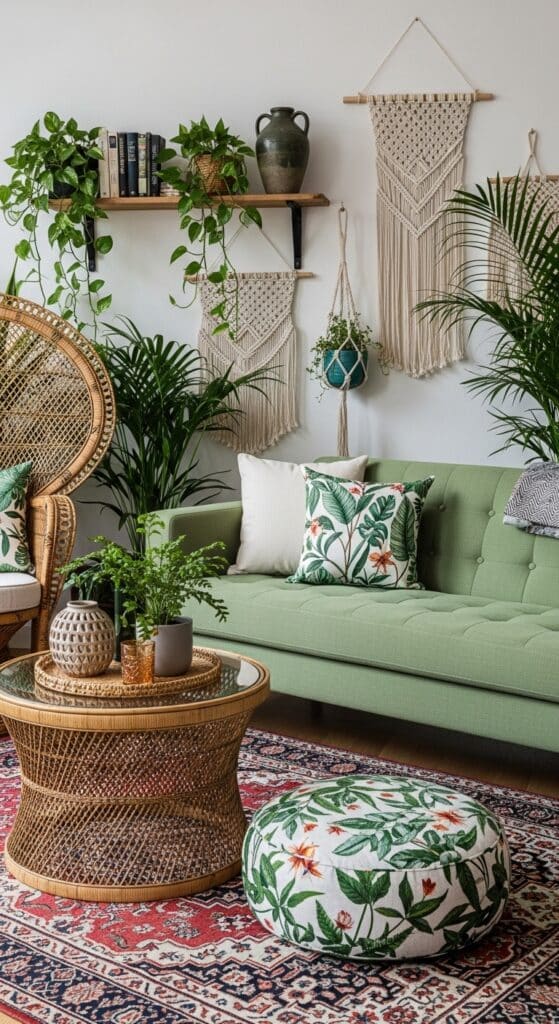
Bohemian style is evolving beyond just macramé and Moroccan rugs. In 2025, it’s all about intentional eclecticism centered around a stunning emerald or sage green sofa.
This isn’t your grandma’s boring old couch. We’re talking about a statement piece that brings the outdoors in while creating an instant focal point. Pair it with vintage rattan furniture, handcrafted pottery, and textiles featuring botanical motifs for an authentic boho vibe.
What makes this trend special is its emphasis on storytelling through décor. Each piece should feel collected rather than purchased as a set. Mix cultural influences, time periods, and materials for a space that feels evolved over time. Plants are absolutely essential here – trailing pothos from bookshelves, cluster palms in corners, and don’t forget the trending large-leaf varieties.
3. Bold Statements with Red Accents
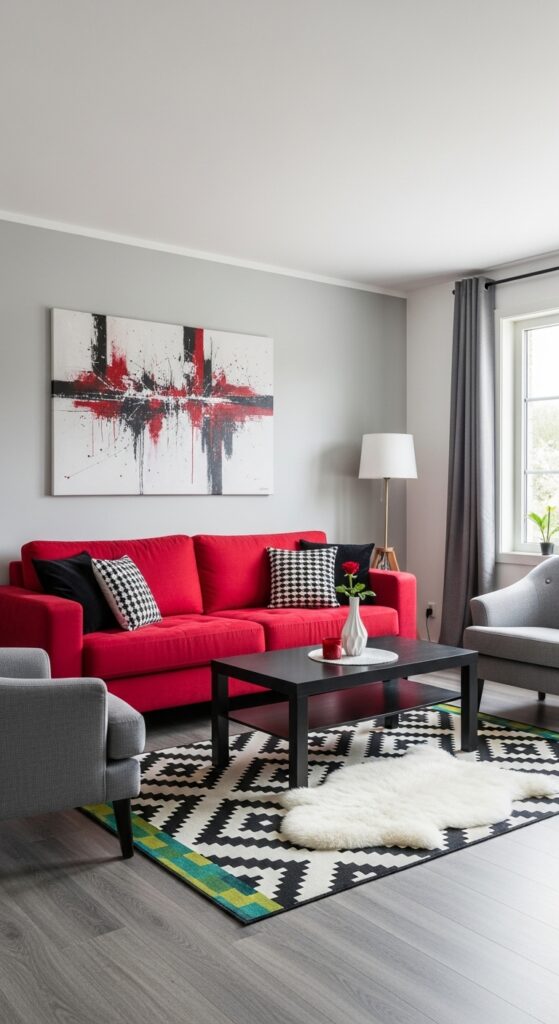
Red is making a dramatic comeback in 2025, but with thoughtful restraint. The key player? A statement couch in crimson, scarlet, or even a sophisticated oxblood that commands attention the moment you enter the room.
Balance is crucial when working with such a dominant color. Keep walls neutral – soft whites or warm creams provide the perfect backdrop. Incorporate smaller red accents through artwork, decorative objects, or textiles to create cohesion without overwhelming the space.
This approach works wonderfully in both large, open concepts and cozier rooms. The red sofa creates instant warmth and energy, making the space feel vibrant and alive. For those hesitant to commit fully, consider a sectional with just one red component or start with red accent chairs instead.
4. Minimalist Zen Retreats
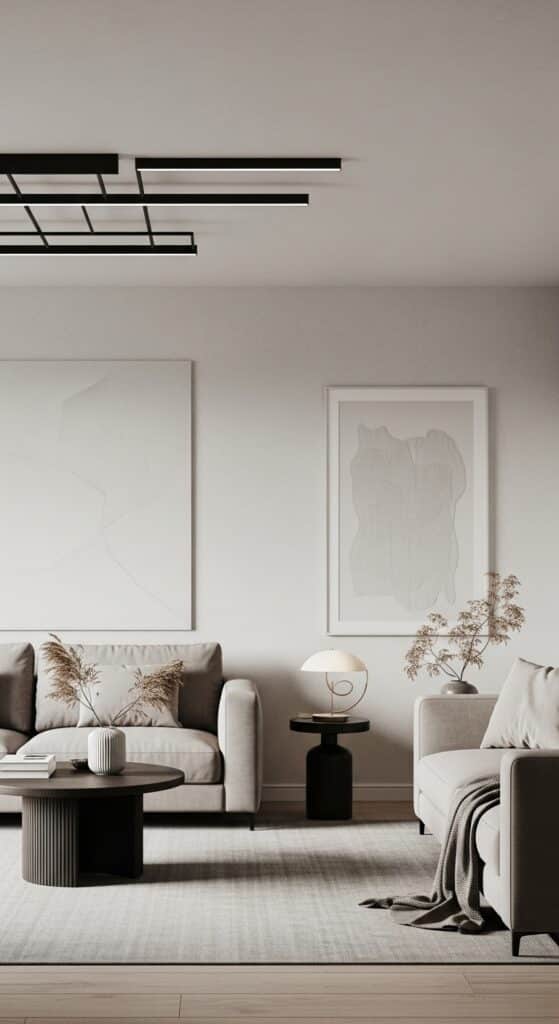
The chaos of modern life has inspired a counter-movement toward calm, uncluttered living spaces. Minimalist zen retreats are gaining massive popularity for 2025, focusing on intentional simplicity and breathable spaces.
Think clean lines, unadorned surfaces, and a carefully curated selection of furnishings. Every item must earn its place through both beauty and function. Low-profile furniture, natural materials, and a restrained color palette of neutrals with perhaps one accent tone creates a sense of order and tranquility.
The goal isn’t emptiness, but rather purposeful arrangement. A single stunning piece of art, a perfectly positioned chair by the window, or an architectural lighting element becomes more impactful without competition for attention. This style is perfect for those who feel visual overwhelm and seek a sanctuary from digital stimulation.
5. Biophilic Paradise
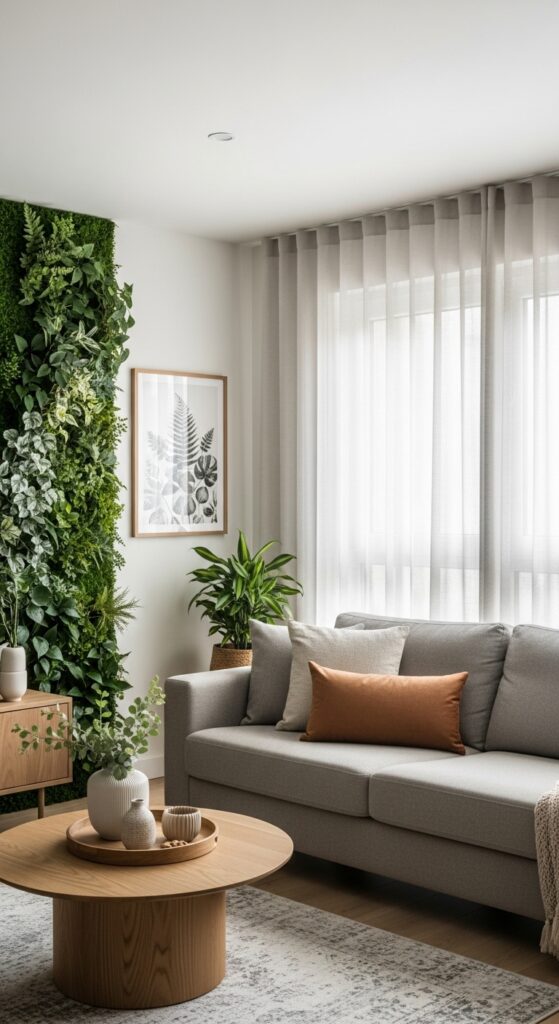
Our connection to nature becomes more precious as urban living intensifies. Biophilic design addresses this by seamlessly integrating natural elements into living spaces, creating environments that improve wellbeing and satisfaction.
In 2025, we’re seeing living rooms transformed into personal ecosystems. Living walls, strategically placed planters, and botanical prints create a multi-layered approach to bringing nature indoors. Natural light is maximized through sheer window treatments, while materials like stone, wood, and linen add textural depth.
Color palettes mirror the outdoors with forest greens, sky blues, earthy browns, and cloud whites. The affect is immediately calming, reducing stress while improving air quality and acoustics. Even small spaces can embrace this trend through carefully selected plants and nature-inspired decor elements.
6. Tech-Integrated Havens

Smart living rooms are evolving beyond novelty into sophisticated, integrated experiences. The 2025 approach focuses on technology that enhances comfort and convenience while remaining visually unobtrusive.
Hidden charging stations, wireless speakers disguised as decorative objects, and smart lighting systems that adjust based on time of day are becoming standard features. Projectors have replaced bulky TVs in many forward-thinking homes, with retractable screens that disappear when not in use.
The most exciting developments are in automation systems that learn your preferences over time. Imagine walking into your living room after work to find the lighting, temperature, and even background music automatically adjusted to your perfect evening relaxation settings. These systems now work seemlessly across platforms, eliminating the frustration of multiple apps and controls.
7. Multi-Functional Workspaces
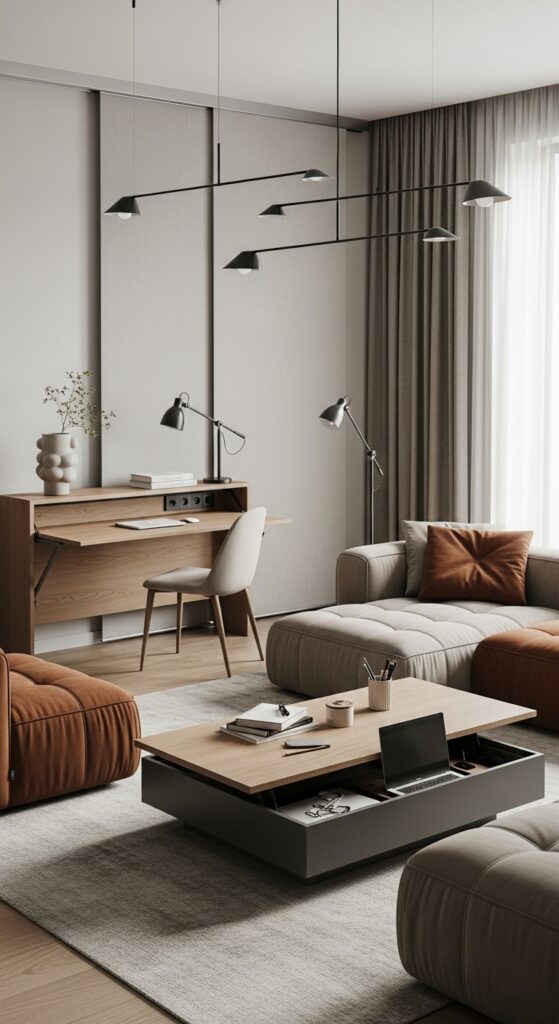
The pandemic permanently altered our relationship with home spaces, and living rooms continue to evolve as multi-purpose areas. In 2025, the key is creating flexible zones that can transform effortlessly throughout the day.
Innovative furniture solutions lead this trend. Look for stylish desks that convert to dining tables, ottomans with hidden storage for work supplies, and modular seating that reconfigures based on needs. The goal is maintaining aesthetic coherence while accommodating practical requirements.
Clever room dividers – whether architectural screens, strategic bookcase placement, or even hanging textile panels – help delineate spaces without building walls. Lighting plays a crucial role too, with different settings for work versus relaxation time. These thoughtful transitions help maintain work-life balance when both happen within the same four walls.
8. Sustainable Sanctuaries

Eco-consciousness has moved from niche interest to mainstream expectation. The 2025 living room embraces sustainability through materiality, manufacturing, and mindful consumption.
Recycled and upcycled materials feature prominently in furniture design, from ocean plastic transformed into luxurious-feeling textiles to reclaimed wood given new life in contemporary forms. Vintage and secondhand pieces add character while reducing environmental impact. Look for items with transparent supply chains and legitimate eco-certifications.
Natural, biodegradable materials like bamboo, cork, and organic cotton bring texture and warmth while aligning with environmental values. Even wall treatments are evolving, with non-toxic paints, natural plasters, and sustainably-harvested wallpapers becoming more accessible. The result is spaces that feel good both aesthetically and ethically.
9. Neo-Vintage Fusion

What’s old becomes brilliantly new again in 2025’s neo-vintage approach. This isn’t about recreating period rooms but rather thoughtfully incorporating heritage pieces into contemporary contexts.
The magic happens in the juxtaposition – a mid-century credenza beneath a modern abstract painting, or a Victorian velvet chair next to a sleek metal side table. The contrast creates visual interest and conveys personal style rather than adherence to any single design doctrine.
Colors play an important role in unifying diverse elements. Choose a cohesive palette that runs throughout the space, allowing disparate pieces to feel intentionally collected. Vintage rugs ground these eclectic arrangements beautifully, adding instant patina and lived-in comfort to even the most contemporary rooms.
10. Curved Contours
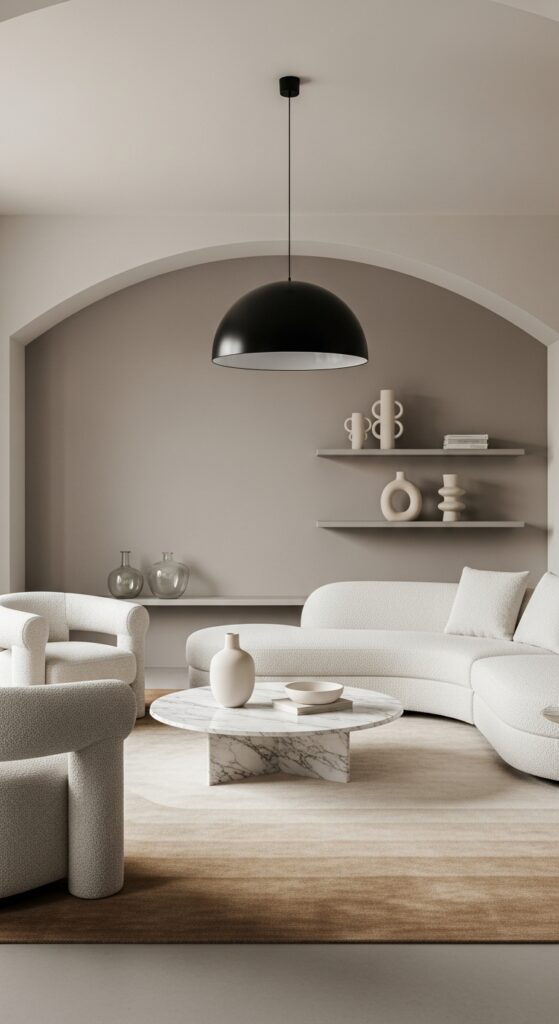
The rigid, straight-lined furniture of previous decades is giving way to softer, more organic forms. Curved furniture introduces a sense of movement and flow that makes living rooms feel more dynamic and inviting.
Look for sofas with gently rounded edges, barrel chairs, circular coffee tables, and arched architectural elements. These shapes create a subconscious sense of safety and comfort, harking back to forms found in nature rather than manufactured environments.
This trend pairs beautifully with plush textiles – bouclé, velvet, and other tactile fabrics enhance the sensory experience of these sculptural pieces. While neutral colorways showcase the distinctive silhouettes, don’t be afraid of bold hues that highlight these statement forms. A curved sofa in a striking jewel tone becomes instant room-defining art.
11. Graphic Color Blocking
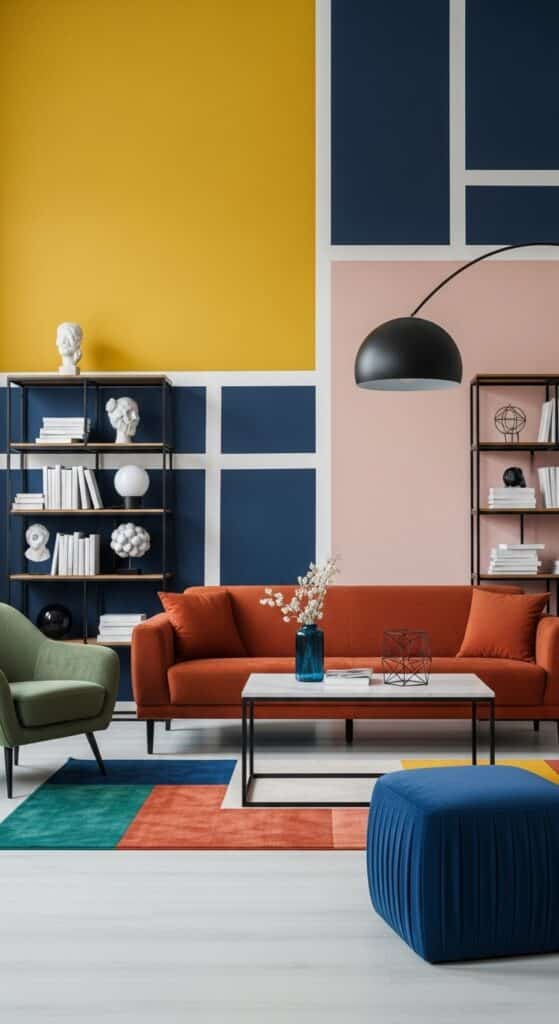
Playful and bold, color blocking brings confidence and personality to living spaces in 2025. This approach treats walls, furniture, and even ceilings as canvases for geometric color play.
The contemporary take involves unexpected color combinations – rust with navy, lilac with forest green, ochre with charcoal. These pairings create immediate visual impact without requiring elaborate decorative schemes. Even minimalists can embrace this trend through carefully placed color moments.
Scale matters tremendously with this approach. A single color-blocked wall creates a focal point without overwhelming, while more adventurous decorators might extend the geometric interplay across multiple surfaces. Furniture can either complement these divisions or stand in deliberate contrast. The effect is undeniably modern but also deeply rooted in art movements of the past century.
12. Japandi Tranquility
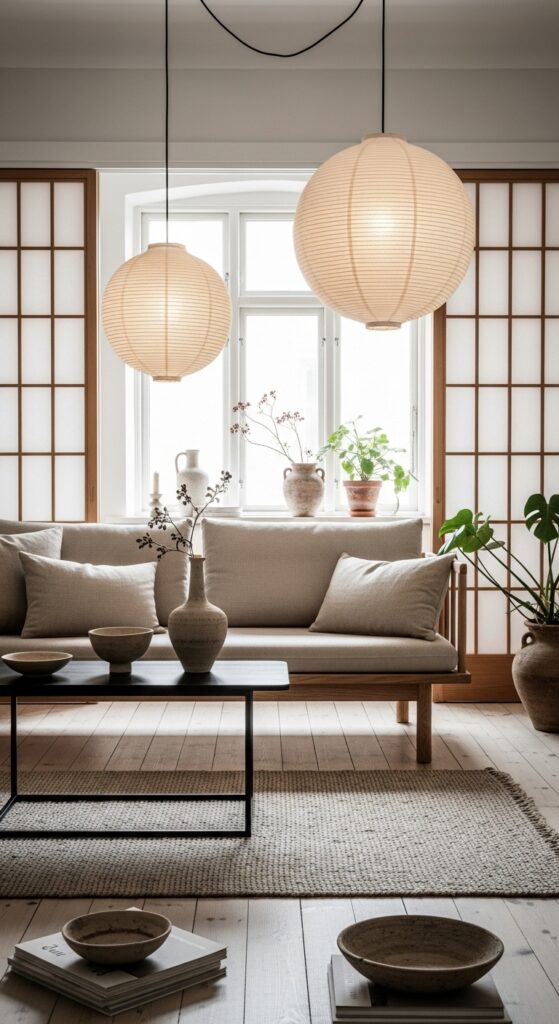
The marriage of Japanese minimalism and Scandinavian functionality continues to evolve in sophisticated ways. Japandi style emphasizes quality over quantity, natural materials, and a sense of tranquil beauty.
Clean lines and thoughtful craftsmanship are hallmarks of this aesthetic. Furniture sits low to the ground, creating a grounded feeling, while negative space is valued as much as the objects themselves. The color palette is restrained but not stark – warm neutrals, soft blacks, and muted natural tones predominate.
Texture becomes especially important in these visually quiet spaces. Raw-edge woods, handmade ceramics, paper lanterns, and natural fiber textiles add sensory interest without visual clutter. This style particularly suits smaller living rooms, as its principles naturally make spaces feel larger and more peaceful.
13. Curated Maximalism
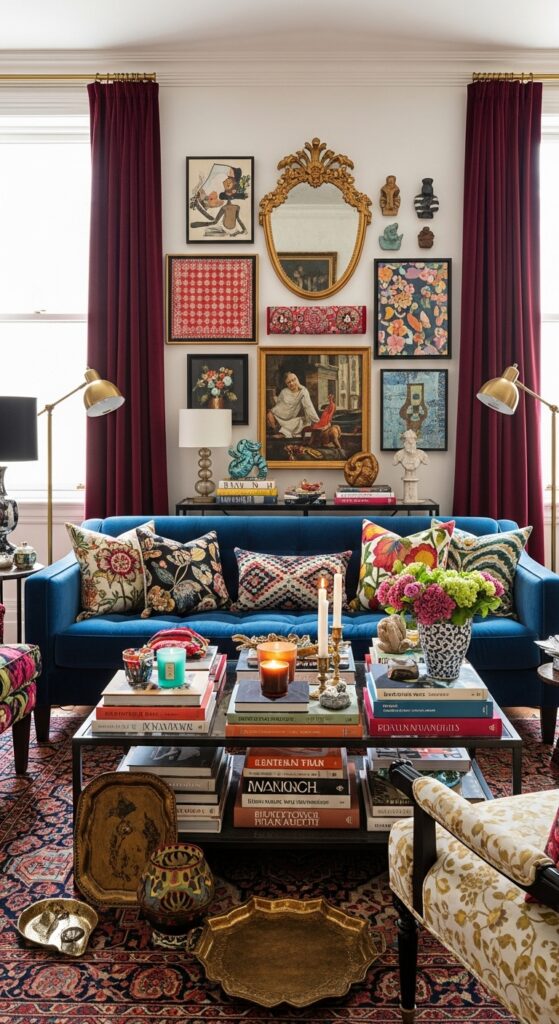
Forget the minimalist mandate – 2025 celebrates personal expression through thoughtfully arranged abundance. The key word is “curated” – this isn’t chaotic clutter but rather intentional layering of meaningful objects.
Gallery walls expand beyond standard frames to incorporate textiles, ceramics, and other dimensional elements. Collections are displayed with museum-like intentionality rather than scattered throughout the space. Furniture features rich details – tufting, fringe, inlay, or carving – that reward close inspection.
Color plays a crucial role, whether through a consistent palette that ties diverse elements together or strategic use of neutrals to let certain pieces shine. The most successful maximalist rooms tell a cohesive story despite their visual richness. They feel like a personal expression rather then a random accumulation of stuff.
14. Textural Landscapes
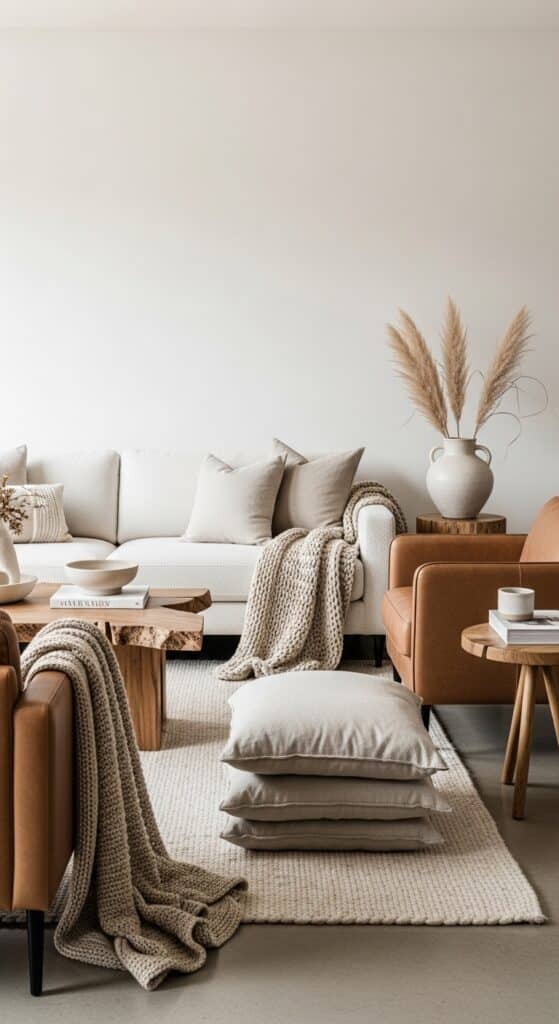
Beyond color and form, 2025 brings heightened attention to the tactile qualities of living spaces. Textural contrast creates visual interest even in monochromatic schemes.
Layer smooth surfaces against rough ones – polished marble beside raw wood, sleek leather against nubby linen, glossy ceramics atop textured jute. These juxtapositions create depth and sophistication without requiring bold color statements, perfect for those who prefer subtlety.
Consider textures at different scales too. A chunky knit throw on a finely woven upholstery fabric creates more impact than similar textures grouped together. This approach works in any design style, from minimalist to bohemian, adding dimension and inviting touch. Its amazing how different a space can feel when texture becomes a primary design consideration.
15. Lighting as Sculpture
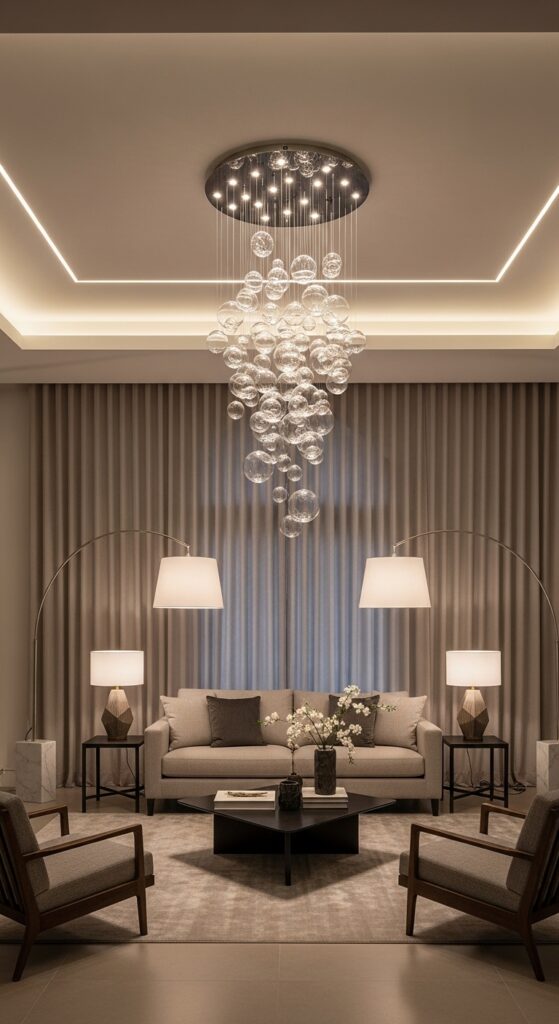
Lighting design has transcended pure function to become the jewelry of the room. In 2025, statement lighting acts as sculptural art even when switched off.
Oversized pendants that hang low over conversation areas create immediate focal points. Organically shaped table lamps bring warmth to corners. Linear LED systems highlight architectural features while providing ambient illumination. The best designs consider both the fixture itself and the quality of light it produces.
Materials range from handblown glass and perforated metals to paper, ceramic, and even innovative bioplastics. Smart systems allow precise control over brightness and color temperature, adapting to different activities and times of day. Don’t underestimate the transformative power of thoughtful lighting – it can completely reinvent a space without moving a single piece of furniture.
16. Gallery Living

The distinction between home and personal gallery blurs in 2025’s art-centered living rooms. This approach prioritizes meaningful artistic expression as the foundation of the space.
Large-scale art anchors room layouts, with furniture arranged to appreciate these focal points. Even functional elements like rugs, lighting, and occasional furniture are selected for their artistic merit rather than just utility. The result feels curated and deeply personal.
This trend embraces all art forms – from traditional paintings and photography to textiles, ceramics, and digital displays featuring rotating collections. White walls aren’t mandatory; richly colored backgrounds can dramatically showcase certain pieces. The living room becomes not just a place to sit but a space that reflects intellectual and aesthetic interests.
17. Wellness-Centered Design
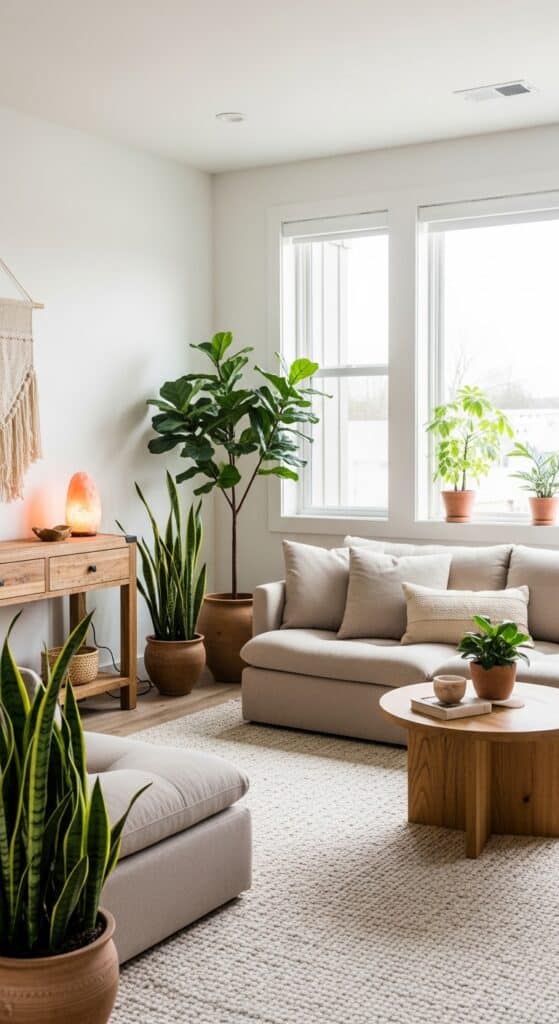
Our living spaces directly impact our mental and physical health – a fact that 2025 design fully embraces. Wellness-centered living rooms prioritize elements that enhance wellbeing on multiple levels.
Air quality considerations include low-VOC finishes, air-purifying plants, and materials that don’t off-gas harmful chemicals. Acoustic comfort comes through sound-absorbing textiles, strategic furniture placement, and even specialized wall treatments that reduce noise pollution.
Ergonomics extend beyond office furniture to seating that properly supports the body during relaxation. Lighting systems mirror natural circadian rhythms, with warmer tones in evening hours to promote better sleep patterns. Even layout choices reflect wellness priorities – conversation areas that encourage connection, meditation corners for mindfulness, and clutter management solutions to reduce visual stress.
Bringing It All Together
The most compelling living rooms of 2025 don’t rigidly adhere to a single trend but rather thoughtfully incorporate elements that resonate personally. Your space should reflect your lifestyle, values, and aesthetic preferences above all else.
Consider how you actually use your living room – for entertainment, relaxation, work, or family time? Let these activities guide your design decisions. Invest in quality pieces that will endure rather than disposable items that follow fleeting trends.
Remember that the best spaces evolve over time, accumulating layers of meaning through objects and arrangements that tell your unique story. Whether you embrace the drama of a red statement couch, the tranquility of Japandi minimalism, or the personal expression of curated maximalism, the most important element is that your living room feels authentically, wonderfully yours.

Mariana is the founder and voice behind Home Nookery, a curated blog dedicated to home design, décor inspiration, and cozy living. With a passion for creating beautiful, functional spaces, Mariana shares practical tips, styling ideas, and thoughtful insights to help readers turn their houses into homes. Whether you’re redesigning a room or just adding a touch of charm, she’s here to guide you with creativity and heart.
